20 of the Best Science Fiction Books of All Time
The 100 Best Science Fiction Books Ever Written
It can be a daunting task to compile a "best of," list. This is especially true when dealing with something as subjective as art. Literature can be high art or just simple entertainment. What constitutes "the best," depends on what one is looking for. The genre of science fiction is vast and diverse. There are endless possibilities for what a science fiction story can be. It can even cross boundaries and combine with other genres.
For this list, we will take a look at 100 of the best science fiction books of all time. These 100 works were chosen for their historical significance, their legendary status as classics, their interesting subject matter within the genre, and their entertainment value. Pure fantasy novels such as “Lord of the Rings,” were omitted from this list. Fantasy is sometimes included as science fiction due to the fictional species and alternative sciences of magic found in the stories.
For this list, we will stick to a basic definition of science fiction. The stories must include some concept of real science and how it may be applied in the future, fictional scientific ideas and theories, imagined future science and technology, or major environmental changes. Science fiction stories can take place at any time period and on earth, on alien worlds or nearly anywhere the author decides to take us.
A Matter Of Taste
While this is a list of the 100 best science fiction books, we will not be giving a definitive ranking among the 100. Each of these books is great for different reasons. It would be near impossible to make a call on one of these books being better than the next. One may be more historically significant while another may appeal more to readers due to the relatable characters. Who can say what criteria makes one truly better than the next for individual readers?
Science fiction challenges the reader to contemplate serious topics. These topics can range from ethics and morality to the meaning of life and what it is to be human. They can challenge us to move boldly towards a future of innovation. Many inventions were first imagined on the pages of a science fiction novel. Indeed, science fiction has not just predicted future technologies but has also directly inspired them.
This genre captures the imagination like no other. It can also work as a cautionary tale of what the future may be like if we do not heed the author’s particular warnings. Science is fun and exciting, but technologies can also be used for evil as well as good. Last of all, science fiction is just plain old fun. It sparks the imagination and takes you to whole new worlds. Without further ado, here are 100 of the greatest science fiction books of all time.
The 100 Best Science Fiction Books Ever Written
Mary Shelley’s “Frankenstein,” was published in 1818, making it one of the oldest books on this list. This timeless masterpiece is considered a classic in two genres. It’s a staple in the collection of science-fiction fans as well as lovers of horror. It deals with ethics in science and what happens when mankind goes too far from ambition and curiosity.
Some of the best science fiction takes a look at the possible future and how it could be negatively affected by technology. “Nineteen Eighty-Four,” tells of a dystopian future where government lies and propaganda rule the day. Few books have had such an impact on the culture and psyche of the human race as this still-relevant, cautionary tale by Orwell.
“Dune,” is just one of many novels on this list that have been adapted for the silver screen. This epic space saga is filled with political intrigue, mysticism and adventure. Herbert created a coherent and complex universe for this grand space opera to take place in.
This seminal work by H.G. Wells is the foundation and inspiration for almost every time-traveling story since 1895. It tells the story of a time traveler who goes to the future to find a world in ruin. There is no advanced society, only a dying planet, war and a mysterious race called the Morlocks.
“War of the Worlds,” was one of the first science-fiction books to deal with the concept of alien invasions. It set a high bar for all of the invasion novels and movies that would follow. Orson Welles’ 1938 radio presentation of this story was said to have caused mass panic from listeners who believed it to be a newscast. Panic ensued as they believed we were being invaded by beings from Mars.
Huxley weaves a fascinating tale of a utopian future that isn’t as great as it seems. Things seem to run perfectly thanks to genetic manipulation, a heavy dose of medication and a caste system that no one can escape from.
Jules Verne was, in many ways, ahead of his time. His adventure stories and early science-fiction works seemingly predicted many future inventions and technological achievements. This novel tells the tale of Captain Nemo in his fantastic submarine, the Nautilus. The ship is surprisingly modern considering the 1870 publishing date of this book.
This is one of Jules Verne’s more fantastic stories. A German professor, Otto Lidenbrock, discovers a passage into the center of the planet. Along with his nephew, he discovers an amazing underground world inhabited by prehistoric creatures.
Asimov describes the complex nature of mankind’s relationship with his own creations. This novel affected an entire generation’s idea of what robots are and what they could be. Tropes and concepts from this novel still show up in modern-day works of science fiction.
Author Kurt Vonnegut survived the WWII bombing of Dresden by hiding in a slaughterhouse. This was the clear inspiration for the title of his seminal novel. This strange tale follows Billy Pilgrim as he experiences his life in a non-linear way after contact with aliens.
This masterpiece of science fiction explores deep concepts such as determinism, fate and how history often repeats itself. The book won the Hugo Award for Best All-Time Series and should be on every science-fiction fan’s to-read-list.
Many people are more familiar with the film directed by Stanley Kubrick than they are of this novel. That’s unfortunate, because it’s a must-read for science-fiction fans. It explores the mysterious origins of the human race and their place in the universe.
Instead of Martians invading earth, this is a collection of tales about humans traveling to and colonizing our closet neighboring planet.
This is Ray Bradbury’s version of the totalitarian, dystopian future. If you’re a fan of “Brave New World,” and “Nineteen Eighty-Four,” this novel will be right up your alley.
Only one human is left alive in the future. He is surrounded by bloodthirsty vampires and must struggle to survive. This story has one of the best twist endings in all of science fiction.
This novel tells the story of a bleak future filled with ignorance after a nuclear disaster puts mankind back in the dark ages. This work explores how bad things can get when science is vilified.
If you’re a fan of adult science-fiction, this book from Christopher Paolini will be right up your alley. Christopher Paolini is an established author that primarily writes for the young adult fiction genre. His previous works include the “Eragon” fantasy series, with the first book being adapted into a film.
“To Sleep in a Sea of Stars” is Paolini’s first foray into the science-fiction realm. The book is aimed at adults and focuses on themes of scientific discovery. Set in the year 2257, the story follows a xenobiologist set to settle down with her fiance in the fictional Sigma Draconis system.
However, her final assignment before heading home involves a crashed zone with a freshly awakened alien reliquary! The events that follow are full of action and intrigue, resulting in a riveting story worth reading.
Key Features:
Available in paperback, hardcover, digital, and audiobook formats
Approximately 900 pages
Science-fiction thriller
“Solaris,” is both science fiction and a psychological thriller. A scientist studying an alien ocean must confront his own deep-buried memories. What is causing him to suddenly see a dead lover from his past?
This novel is another on our list that has been translated successfully to film directed by Stanley Kubrick. Alex is consumed with violence until an experimental fix does away with his base desires. This book is dripping with dark comedy and satirical social commentary.
Science fiction is often thought provoking and makes us question the morality of how and when scientific advances should be used. This novel by Daniel Keyes is a great example of this. In this tale, a developmentally disabled man is offered a treatment to change him into a genius.
This cult classic is one of the best science-fiction comedies of all time. It’s smart, funny and filled with social commentary in a way that will make you laugh as much as it makes you think. Arthur Dent goes on an adventure with an oddball cast of characters once the earth is demolished to make room for an intergalactic highway.
This novel is a timeless children’s book that is an enjoyable read for all ages. Meg and Charles are two children who go on a trip through time, space and other dimensions to find their missing father. One part science fiction and one part fantasy, this tale deals with some heavy themes such as religion, family and the value of individuality.
This is another science-fiction story that deals with ethical questions of science and the concept of playing god and messing with ecosystems. If you enjoyed the big budget, blockbuster movie, do yourself a favor and read the novel by Michael Crichton.
Few people have done as much to popularize science as Carl Sagan. Sagan was an astronomer, astrophysicist and cosmologist. This novel by Sagan explores what it might be like for humanity to come into contact with a more advanced alien species.
This novel is groundbreaking for its thought provoking look at issues of gender and feminism. The book was first published in 1969, making it ahead of its time in tackling some tough subjects. On the planet of Ekumen, there lives an alien colony that has no set genders.
This novel may seem more like fantasy than science fiction due to its use of dragons, a royal family and other fantasy tropes. It is, however, set on an alien world with no shortage of science-fiction technology and concepts.
This long novel comes from Stephen King, the master of horror. It has elements of horror as well as fantasy. The science fiction elements come in the form of an influenza strain that was developed for use in biological warfare. Good and evil collide in a post-apocalyptic world.
War is a popular topic within science fiction. “The Forever War,” deals with the topic masterfully. far off in outer space, young women and men are drafted into an intergalactic war. Upon returning to earth, the soldiers barely recognize their own home planet. Written towards the end of the Vietnam conflict, this novel is still relevant today.
Koontz does here what he does best with a story of shady government institutions and questionable uses of science and technology. This early work by Koontz tackles the subject of unchecked genetic manipulation.
Dan Simmon’s weaves a tale of pilgrims on a journey to a far away planet. A mysterious being called the Shrike may be able to provide the answers they seek. This science fiction adventure is based on the “Canterbury Tales,” by Chaucer.
“The Children of Men,” was written in 1992 and is set in the near future of 2021. In this mysterious science fiction story, humanity hasn’t seen a real live birth in a decade. This novel offers some top-notch world building. This leads to a believable story even with the fantastic plot elements.
Like the previous entry on this list, “The Hunger Games,” succeeds due to fantastic world building by the author. This is a well thought out universe. In a dystopian future, contestants are chosen for a contest where they must fight for their lives to survive. The initial book was followed by a whole series that is well worth reading.
This is science fiction meets the zombie apocalypse genre. The trend continues to move zombies away from the supernatural creatures of horror that the once were. In this novel, like so many other modern zombie tales, the creatures are the result of science and technology gone awry.
This novel has often been likened to the movie “Castaway.” Instead of being stranded on an island, the protagonist is stranded on the planet Mars. This story presents the triumph of the human mind and spirit, even in the most dire of situations. It also presents some realistic science and space-travel scenarios for a work of fiction.
This is science-fiction comedy at its best. Redshirts is a term that references the TV and movie series, Star Trek. Lower ranked crew who wore red shirts on those shows often never made it back from their adventures. In this comedic story, a new starship crew member realizes that his colleagues seem to die at an alarming rate.
This story involves a caste system in the future where most things are color-coded to fit into their designed niche. The protagonist, Darrow, is a lowly “red,” and does manually labor in the mines of Mars to make the planet habitable. Once he realizes that his work is in vain, he starts to question things.
This is a brilliant novel that deals with artificial intelligence and what it means to be human. Like so many other science-fiction books, it asks tough questions about the ethics of science and mankind’s responsibility to our own creations. It was the basis of the cult-classic film, “Blade Runner.”
Ender was genetically created to be a genius hero for earth. Believing himself to be playing a simulation game, Ender finds himself in the middle of a real war with an alien force bent on the destruction of the human race. This novel kicked off a series of books as well as a movie adaptation.
This may be the quintessential work of cyberpunk science fiction. A hacker is hired to take control of a virtual-reality network called the Matrix. Does that sound familiar? This book took on the topic of virtual reality way back in 1984.
This thoughtful story explores what it means to be under rule of a foreign power and what peace is really worth. In this novel, the world has been colonized by an alien race, The humans and this invading species have been coexisting peacefully for a century.
Vonnegut explores the consequences of the bombing on Hiroshima to end WWII, but he does so in his own distinct way. This is not a book set during the actual events, but a story of a man named John who wishes to write a book about those events.
“Recursion” is an action-packed novel full of mystery and intrigue. The story revolves around what seems like a pandemic-level disease sweeping across the world. But this disease is unlike anything humans have ever encountered before. In addition to bleak physical ramifications, this disease plagues sufferers with memories of a life they’ve never lived.
The origins of this mysterious plague start to unfold when neuroscientists realize it’s not a disease at all. Instead, it’s just the first of many world-changing discoveries that are poised to change the trajectory of time-space entirely.
This book is a fantastic read that perfectly marries the realms of mystery, science-fiction, and thrillers into one unique work.
Key Features:
Available in paperback, hardcover, digital, and audiobook formats
336 pages
Science-fiction thriller
This is an interesting take on a future human society that lives on both the earth and the moon. Libertarian ideology is explored in this story of a revolt from moon colonies against being ruled over by earth.
An alien invasion leads to decades of utopia on earth, but at what cost? This is another science fiction look at what may happen if the human species is confronted by a superior, more advanced species. It comes from the same author that gave us “2001: A Space Odyssey.”
Buck Rogers was one of the first space-explorer heroes to capture the imagination of children and adults alike. The imaginative designs for creatures, spacecraft, technology and alien landscapes inspired generations of science-fiction comics, movies and literature.
Goodreads hands out several book awards every year and gave The Midnight Library its Choice Award for Fiction. Matt Haig takes you on a journey to explore a library placed on the outskirts of the universe. Each book held on the shelves tells the story of an alternate reality or parallel universe. The writers of those books are the ones responsible for what happens in their worlds. The book asks what you would do if you had the chance to view all of your decisions and how different moments changed you.
Haig bases the story on Nora Seed, a woman given the chance to visit the Midnight Library and view her life in different universes. She discovers how her decisions affected her and have the chance to decide whether to stick with her life or step into a new world. Haig will leave you wondering what you would do in her place. By the time you learn Seed’s decision and reach the end of the book, you may wonder what you would do in her position.
Key Features:
Hardback edition
Reached The New York Times Bestseller List
Includes more than 300 pages
Winner of the Choice Award for Fiction
This entry may seem strange to science-fiction fans, but hear me out. Keep in mind that this list is for the best books and not just novels, therefore a comic-book could qualify. This single issue introduced Superman to the world in 1938. This story about an alien with super-human powers was written by two teenagers from Cleveland, Ohio.
Superman’s origin story created an entire sub-genre of science fiction that is still massively popular in comics, TV and film today. Obviously, one can no longer purchase the single issue unless they’re a millionaire, but you can still read it in a compilation book titled: “Superman: The Golden Age Vol. 1.”
While Superman popularized the idea of heroes with powers, the graphic novel, “Watchmen,” deconstructs the idea of superheroes and deals with complex political and moral ideas. This graphic novel is often cited as a turning point in the perception of comic books as serious literature.
This unique novel is a mix of science fiction, techno thriller and historical fiction. It deals with a group of WWII-era code breakers and a second group of decoders from the 1990s. Historical figures from Winston Churchill to Ronald Reagan show up in this complex drama. Concepts such as digital-monetary systems and cryptography are explores in realistic detail.
A father and his son must travel across a decimated America in this post apocalyptic tale. The story is filled with the usual dangers of such a situation including roving bands of desperate thieves and marauders. This is a story with a lot of heart that explores the power of love as well as the darker side of humanity.
The Saga is actually a collection of novels that mix the genres of science fiction and fantasy. In this universe, there are humans and creatures of magic that can create rifts to connect distant planets.
This is both a science fiction story and a love story. It deals with a man who has an odd problem. He randomly jumps through time. His loving wife must learn to cope with his frequent disappearances and unpredictable reappearances throughout her linear timeline.
This science fiction war novel follows the military career of a soldier named John Perry of the Colonial Defense Forces. The novel is filled with great world building, creative technologies and a slew of interesting alien races.
Matt Damon gained a new legion of fans and picked up several awards as the star of The Martian. Fans of the book used as the basis of the film along with anyone who loves reading about space exploration will want to pick up Project Hail Mary from the same author. Andy Weir tells the story of Ryland Grace who is the last man standing after his ship crashes. When he wakes, he finds two corpses on his ship and no memories of his life. Grace is tasked with trying to remember where he came from and what he needs to do.
Those who love stories that pull them deep into books will like this one. Weir does a good job of making you care about Grace and his mission while also keeping you guessing about the world around him. Just when you think you have it all figured out, he throws a new twist at you. Covering almost 500 pages, Project Hail Mary will keep you entertained from start to finish.
Key Features:
Written by the author of The Martian
Includes nearly 500 pages
Hardback edition
Classic space exploration story
The twin planets of Urras and Anarres have vastly different political and economic systems. One is a capitalist society that struggles with inequality. The other is an anarchist’s and socialist’s dream utopia. The main character is a scientist named Shevek who accidentally starts a revolution.
Great science fiction novels often inspire movie adaptations. In this case, the Star Wars film franchise came first and inspired these novels. Many novels came after “Return of the Jedi.” These kept the franchise alive during the gap between the original film trilogy and the modern movies. The best books of the bunch were the three novels that became known as “The Thrawn Trilogy.”
Ray Bradbury is a true legend among science fiction authors. “The Illustrated Man,” is a collection of 18 different short stories. Common themes pop up in most of the stories such as human psychology and the sterile coldness of technology.
This 1992 novel is an epic space opera. It deals with themes such as love, betrayal, human relationships and genocide. It’s also filled with imaginative alien races and technology. Superhuman intelligence and variable physics are explores as well.
Asimov shows up as the author on this list quite a few times. This is for good reason. He believed that science fiction can be combined with any other genre in literature. Here, Asimov combines science fiction with an old-fashioned detective story. far into earth’s future, hyperspace travel has been conquered and planets are being colonized.
“The Mars Triligy,” is often considered to be Kim Stanley Robinson’s crowing achievement. This is actually a collection of three novels that were titled: “Red Mars,” “Green Mars,” and “Blue Mars.” The main theme is the colonization of Mars. These novels span over 200 years and detail the earth’s political structure, technology and social issues connected to the colonization.
This book won both the Nebula and Hugo awards. Kivrin is a young lady who is studying past ages of humanity. She gets stuck in time at a particularly dark period and becomes an unlikely source of hope as her peers struggle to rescue her.
This is a dark and unique tale of an eccentric scientist working on some unusual research. The book takes place in the city of New Crobuzon which is built within the remains of an ancient beast. The scientist, Isaac, has an encounter with a bird-like alien that will change his life forever.
C.S. Lewis is well known for his fantasy novels featuring a certain lion named Aslan. What is less known is that he also penned some fascinating science fiction. “The Space Trilogy,” is about a philologist by the name of Elwin Ransom. Upon journeying to Mars, Ransom finds out that Earth has been exiled from the rest of the solar system.
Red Schuhart and his friend Kirill travel into the Zone to salvage things left behind by aliens. A robust black market exists around these alien artifacts. The Zone starts dominating Red’s life and he journeys back there again and again to find the answers that he seeks.
Four different versions of one person from alternate dimensions meet in this witty science-fiction novel. This book is a classic among feminist literature and a fascinating piece of science fiction that delves into the concept of gender roles.
A woman in her 30s is able to communicate with the future. Connie can specifically connect to the year 2137. The warnings from the future have serious relevancy for today, but of course Connie is simply deemed insane by current-day society.
This story is notable for its unique and realistic characters. It is set on a vulnerable space station and during a war. It’s not about fantastic technology or alien races, but instead takes a more real-world look at what a space station might be like. Then, it creates a suspenseful story set in this well-designed world.
This is another science-fiction work that deals with virtual reality. It was turned into a big-budget, special-effects extravaganza film directed by none other than Steven Spielberg. The novel tells of a utopian virtual reality known as the Oasis. This book is known for its fun inclusion of a ton of pop-culture and video-game references.
Kazuo Ishiguro landed on The New York Times Bestseller List with Klara and the Sun. The author of hit books such as The Remains of the Day and Never Let We Go created a new tale that focuses on Klara. Unlike similar stories about human characters, the author wanted to tell a story from the point of view of an artificial intelligence being. Klara sits in a retail store and looks at all of the people who walk by on the street and those who come into the store with the hope that someday, one of them will choose her.
As the winner of the Nobel Prize for Literature, Ishiguro knows how to pull readers into a story and keep them guessing about what will happen next. Klara keeps you wondering whether anyone will choose her and whether she will get the love she deserves. It might leave you questioning what love means and looking at the love in your life. With more than 300 pages, Klara and the Sun will keep you interested until the very end.
Key Features:
New York Times Bestseller List book
Hardback edition
Includes more than 300 pages
Compelling and interesting story
A virus nearly wipes out an earth colony on the planet Jeep. Only a few women survive the ordeal. After generations of change and adaptation, the humans lose touch with the roots of their humanity, until some fellow Earthlings arrive on the planet.
When a proud alien race has its home planet destroyed, they must learn to coexist with another race on their new, adopted world. The task of preserving their race may come at the expense of losing their very culture and identity.
There is often debate on what is the earliest work of science fiction. This book certainly has a strong case for it. Written in 1666, this is the oldest work to make it on this list. This is a feminist masterpiece from a time when you would hardly expect such a thing. A woman is stranded on another world and becomes its leader. She uses her new power to get rid of war and sexual discrimination.
This novel is both science fiction and a police procedural. It takes the unique concept of two cities that actually occupy the same space, and it combines this with a good old murder mystery.
Kaye Lang is a biologist with a disturbing theory. She believes that long-gone diseases are coded into human DNA. Worse still is that they could potentially be brought back into the world to reek havoc on the human population. When a virus hunter discovers a new strain, she fears that her theory has become a reality.
Time, space and physics are no longer making any sense after a mysterious disaster plagues the town of Bellona. This novel has a very “Twilight Zone,” feel to it, as weird occurrences bewilder the people of Bellona. Two moons appear in the sky, buildings are damaged only to reappear intact and time is no longer consistent.
This book contains 12 short stories that revolve around one central theme. In this sci-fi world, the human race has turned into the Human Galactic Empire. Throughout a hundred millennia, humans used four pillars of science to spread throughout the cosmos. However, the fifth science ended the flourishes empire for good!
“The Fifth Science” explores the aftermath of humankind’s collapse. The stories all take place after the burgeoning empire’s downfall, covering a wide range of themes. Every story is unique. However, they all reflect the dangers and pitfalls of human ambition.
Key Features:
Available in digital and paperback formats
336 pages
Compilation of 12 stories
Multiple themes and genres
This novel from the creator of Tarzan is one in a whole series about the hero named John Carter. Carter is a Civil War-era soldier who finds himself on Mars. He ends up as a sort of “reverse Superman,” being an alien on another planet who then becomes a powerful hero. A Disney movie was made about John Carter that didn’t fare too well at the box office. That’s unfortunate, because this novel is a brilliant piece of science fiction.
This novel is like a mix of a Sherlock Holmes mystery within a science-fiction setting. It features one of the bets twist ending on this list of books. Mike Erikson has unique gifts and is asked to travel across country to investigate a device discovered by DARPA scientists that can fold dimensions.
This is a science-fiction thriller and detective story rolled into one. The heroine, Shannon Moss, works for Naval Criminal Investigative Service. Shannon must come to terms with her past as she searches for a missing girl in this tale of time travel, mystery and military intrigue.
Charles Yu weaves a science-fiction story that explores the father and son relationship. It also deals with the themes of life, linear time, human memories and how we create an identity for ourselves.
Kady awakes one morning with nothing on her mind besides her relationship with Ezra. That same day, the earth is invaded by aliens. This book deals with war, large corporations and how they often profit from those wars with little thought about the consequences to the little guy caught in the middle.
Detective stories and mysteries keep popping up in this list of science fiction. This is yet another one that brilliantly blends the two genres. In a world preparing for an near-future asteroid impact on earth, a detective must work to solve a murder mystery. The death has been officially ruled as a suicide, but the detective suspects foul play.
Part of the old United States is now a militaristic republic, perpetually at war. June is a young genius from an elite, wealthy family. She is being trained for military service in the republic. Her world is changed forever when she runs into Day, a young criminal who was born into poverty.
Margaret Atwood’s brand of science fiction is sometimes called “speculative fiction.” She might even be called a futurist. This is someone who looks at trends in politics, culture and especially technology. They then try to predict what the future may hold. To some degree, most science-fiction authors do this. In “Oryx and Crake,” Arnold has crafted a romantic adventure.
This is a cautionary tale about the dependence people have on technology, especially being connected to the internet. In a future South Africa, a teacher realizes something is wrong with the kids she knows. They seem more caught up than usual with their online lives.
In the year 2380, an Commonwealth is developed to connect multiple worlds. They span 400 light years and are all connected via wormholes. When a distant star mysteriously vanishes, a ship is sent out to investigate the anomaly.
Renata Ghali travels deep into the stars in search of a planet that is free of war and poverty. The planet was seen in a vision by Lee Suh-Mi. It may even hold the answers to the origin of earth and life on our planet. This novel deals with the idea of keeping secrets and the consequences that can stem from it.
Aliens discover an enormous object that is dubbed the artifact. Everyone is apprehensive about encountering the race that could have built such a massive, technological wonder. Two humans and a band of exotic alien explorers seek out answers to this mystery in the fun adventure.
This 1979 novel was the first in an epic series called the “Canopus in Argos,” series. Shikasta is also known as Colonized Planet 5. The book uses the structure of a history lesson filled with documents, research papers and journal entries to describe a planet that is actually the earth from the viewpoint of others.
A small girl named Rose is riding her bike when she falls down a shaft. The rescuers are met with an alarming discovery. She seems to be in the grasp of a giant metal hand. This is an intriguing thriller that will keep you engaged til the end.
An odd band of Hollywood stars and actors roam the now-decimated Great Lakes region. This tale is set in the future after the collapse of civilization as we know it. The survivors are willing to risk everything for art and the human race.
The author of this science-fiction tale is a real-life scientist. Specifically, she’s a biologist. This is perhaps why she is so good at creating realistic and fascinating alien species. This is a story of an inter-species conflict set in a realistic, well-crafted fictional universe.
The Confederation is a government of numerous alien worlds and species. They have granted the people of earth a membership in this group, but it’s not for free. While the Confederation has evolved past war and violent conflicts for themselves, they enlist the aid of humans to fight such battles for them as the entry fee for their Confederation citizenship.
“The First Encounter” is the first novel of the “Ascension Wars” series. It offers a riveting start to a more significant tale. Filled with iconic science fiction themes, the book delves into the possibilities of space colonization and what mysteries lie beyond our planet.
In this story, the fictional United Nations of Earth set a ship out to colonize a nearby planet. Upon arrival 90 years later, the ship’s inhabitants find that a thriving alien species already inhabit their target planet. The ship’s captain must figure out what these aliens are and make tough decisions that could impact all of humankind.
Key Features:
Available in digital, paperback, audiobook, and audio CD formats
359 pages
USA Today bestseller
The first book in a series
This is not just a great story, but a great example of unique story telling. The city of Veniss is explored through the eyes of three different characters. These vastly different people each have a unique voice and perspective on things.
In “The Last Melody,” you’re taken to a not-so-distance future where humankind has become a spacefaring race. Interplanetary democracy keeps the peace among colonies. Meanwhile, advances in biomedical research and technology have extended human life expectancy by several decades.
While investigating a series of grisly murders, our main character uncovers a massive conspiracy that threatens the way of life for billions!
This story plays out like a mystery thriller novel. Elements of action keep you on your toes as you continue to dive deeper into this futuristic tale. With artificial intelligence and human survival themes, this novel has plenty of captivating moments to keep you enthralled.
Key Features:
Available in digital and paperback formats
410 pages
Broken into three acts
Science fiction thriller
This novel has been previously published with the title: “Story of Your Life.” It was latter turned into the movie, “Arrival,” which ultimately lead to the book-title change. This book takes a realistic look at how a first contact with aliens might go down.
This is a collection of science-fiction short stories from award-winning author, Ted Chiang. The stories hit on a number of subjects such as portals into other dimensions, artificial intelligence and alien scientists. They all contain realistic and relatable characters that make the stories really resonate with readers.
This novel by Gene Wolf consistently ranks high on lists for both science fiction and fantasy books. It uses many fantasy tropes but is set in the future, millions of years from now. All that we know of history and culture is a distant, long-forgotten memory in this new fantastic world.
This is a destruction-of-earth story. The planet’s last survivors struggle to survive as they drift off among the stars. A new planet is found that offers hope for future generations. Unfortunately, it also offers plenty of dangers and obstacles that must first be overcome.
Final Thoughts
Science fiction is one of the most fascinating genres in all of literature. It’s a diverse and exciting genre that has spawned countless sub-genres of its own. It is one of the earliest forms of fiction. This can be witnessed in this very list that contains books from as far back as 350 years ago. Science fiction forces us to take a serious look at humanity, technology and the good and bad that can flow from scientific discoveries. It can be fun and adventurous, funny, or deep and thought provoking. No matter what type of stories you enjoy, there should be plenty of books on this list to entertain you.
50 Best Sci-Fi Books of All-Time: Ultimate List (2022)
Some sci-fi books are truly life-changing. That’s why it’s no surprise that Hollywood tends to look at the science fiction genre for books to turn into movies. Of course, these movies never live up to the books they’re based on, but that’s a discussion for another day. But the sci-fi book landscape seems to be growing in popularity, as we saw with 2018’s list of the most anticipated new sci-fi and fantasy books (our favorites were in the science fiction genre).
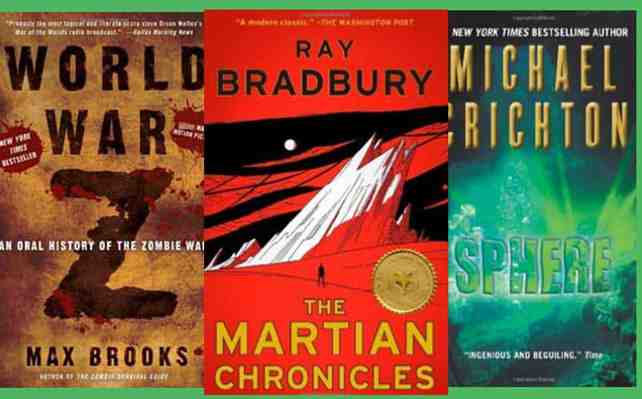
A great science fiction novel will take you to places you’ve never been before, instill unique ideas about the future or the unknown, or shed new light on space in an exciting way.
Here are the top 50 best sci-fi books to read:
See Also: Best Fantasy Books | Best Mystery Books
The Origin Mystery Trilogy
Author: A.G. Riddle
It all started with The Atlantis Gene, which went on to sell over one million copies and is being made into a movie. This book takes elements from many different parts of science: the lost city of Atlantis, alien technology, apocalyptic scenarios and adds in a dash of conspiracy. It’s tough to explain without actually spoiling it, but The Atlantis Gene revolves around human history and evolution, and it contains a great mix of action, thriller and science fiction.
The second book in the series, The Atlantis Plague, is about human survival when faced with extinction, and it’s the perfect example of how a sequel should be written. In fact, many say book 2 is the best.
The third novel in the series is The Atlantis World is the most exciting and takes place across Atlantean science stations throughout the galaxy as the team of scientists delve into the past of the mysterious culture in hopes to find the origin of humanity.
Blindsight
Author: Peter Watts
Blindsight is a suspenseful bit of hard science fiction by Peter Watts. The novel revolves around alien probes that visit Earth, and our need to get to the bottom of who exactly they came from. Scientists decide to dispatch an ensemble cast of explorers, including a linguist with multiple personality syndrome, a cyborg biologist and a sort of vampire (not the glittery kind). It’s an exploration of the nature of consciousness. The novel was nominated for a Hugo Award, and although it didn’t win, it’s a fascinating read which certainly deserves your attention.
The Hitchhiker’s Guide to the Galaxy
Author: Douglas Adams
If you haven’t read The Hitchhiker’s Guide to the Galaxy yet, you’re simply not sci-fi-ing right. The story follows Arthur Dent in his travels about the galaxy with his intrepid friend, Fred Prefect.
The duo gets into some hilarious situations and scenarios. The Hitchhiker’s Guide to the Galaxy is loaded with barbed wit and other funnies. You’ll meet some truly unique characters along the way, and it’s simply one of the coolest sci-fi books to read.
See Also: 68 Upcoming Sci-fi Movies 2020 & Beyond
I, Robot
Author: Isaac Asimov
I’m sure we all remember the movie I, Robot starring Will Smith, and that movie was a fun Hollywood ride, sure. But the book it’s based on of the same name by Isaac Asimov is even better.
Like the movie, it revolves around the three laws of robotics: (a robot can’t injure a human being, a robot must obey orders given to it by human beings unless it conflicts with the first law, and a robot must protect its own existence as long as such protection does not conflict with the first two laws).
The novel contains stories of robots gone mad, robot politicians, and robots who secretly run the world.
The Stand
Author: Stephen King
While Stephen King may be the king of horror, many of his books are steeped in sci-fi themes. The Stand follows the story of an escaped patient of a biological testing facility that is unknowingly loaded with a mutated strain of super-flu that will wipe out 99 percent of the world’s population in just a few weeks. It’s a classic tale of good and evil.
Randall Flagg vs. Mother Abagail. It’s a great end-0f-the-world scenario, with over 99% of the world’s population being wiped out, and the remaining characters in the story are believable. It’s a novel that’s nearly 40 years old, and we’re still debating about the ideas within.
Ubik
Author: Philip K. Dick
Author Philip K. Dick is one of the most well-known sci-fi authors of all-time, grafting so many great novels that it’s hard to include them all on this list. But one of his most notable works is Ubik, which was a future set bit of philosophical fiction. It followed protagonist Joe Chip, who works for a company that employs “inertials” (people who can negate the powers of precogs and telepaths).
When the owner of the company is placed in “half-life” and odd, unsettling things begin to happen to others who survived the same attack that put him there. To figure out how these things are happening to the group, they must look to a mysterious product called Ubik.
Ringworld
Author: Larry Niven
Another bit of hard sci-fi, Ringworld is about a ring with 6 million times Earth’s surface that had been built by beings that no longer inhabit it. Of course, the aliens in this novel are described as large feline-like creatures, so there’s that. But the novel has some brilliant ideas stuffed in its roughly 350 pages (which makes it a quicker read than most science fiction books). There was a graphic novel adaptation of this, but the novel is 10x better as it tells a more complete story. Ringworld is a fascinating idea.
Rainbows End
Author: Vernor Vinge
Rainbows End takes readers into San Diego, California in the year 2025. It follows a recovering Alzheimers patient, Robert Gu, following the cure of his disease. In this new world — in which he’s an oddly young-looking seventy-five year old man — he has to find his new place among the high-tech lifestyle. Of course, Rainbows End isn’t that simple, as there is a conspiracy involved.
The Diamond Age
Author: Neal Stephenson
Neal Stephenson has more than one book on this list, and that’s because of his creative sci-fi — we simply love it. The Diamond Age is a stunning tale set in the distant future of Shanghai. In the story, a man is commissioned to create a primer to educate a rich man’s granddaughter so that she can be educated in ways superior to the norm. The engineer is mugged, and an illegal copy of the primer is floating around on the streets. When it falls into the wrong hands, there’s no telling what’s going to happen.
Accelerando
Author: Charles Stross
Charles Stross is a Hugo Awarding-winning author behind Glasshouse. Accelerando revolves around a frightening future and a young man who finds his destiny linked to the fate of all of humanity. It’s about the uncontrollable acceleration of advancing technology.
Dune
Author: Frank Herbert
Dune is the classic novel filled with adventure, and is frequently listed among the best sci-fi books of all time. It won a Hugo Award and a Nebula Award. It’s quite possibly the best epic novel of all time, not just in the sci-fi genre, either.
The Forever War
Author: Joe Haldeman
Another winner of both the Hugo and Nebula Awards, The Forever War is about a member of an elite military unit who is propelled through space and time to fight a distant thousand-year conflict against aliens, knowing that because of the time dilation of space travel, he’s aging months while Earth is aging centuries.
Stranger in a Strange Land
Author: Robert A Heinlein
Stranger in a Strange Land follows Valentine Michael Smith, who was born during and is the only survivor of the first manned mission to Mars. He’s raised by Martians and then arrives on Earth years later, while he has no knowledge of Earth’s cultures or religions. He learns that he is the legal heir to an enormous financial empire and technically he owns Mars, too. Michael explores human morality and what love really means.
Do Androids Dream of Electric Sheep?
Author: Philip K. Dick
One of the most widely-read sci-fi books of all time is Do Androids Dream of Electric Sheep? by Philip K. Dick. It’s a masterful telling of a world basically overrun by androids, and a broke bounty hunter who is tasked with finding rogue androids and retiring them. It was the inspiration for one of the most-loved sci-fi movies of all time, Blade Runner.
Gateway
Author: Frederik Pohl
Book one of the Heechee Saga, named Gateway, is one of the best sci-fi books to read because of it’s a well-written space adventure about universal exploration with a cinematic presentation.
Sure, it might be a bit strange, but that’s part of its appeal. If only the sequels would have lived up to the quality of this first book, Pohl could’ve had himself a successful trilogy worth reading. But skip the sequels. Just read this.
**Update 9/28/17: We just learned that there’s a Gateway TV series in the works from the creator of The Walking Dead.
Hyperion
Author: Dan Simmons
Hyperion is a science fiction novel about a world which contains a creature named Shrike. Some worship the being, others fear it, and some are trying to destroy it. The story follows seven people as they travel to Hyperion to seek Shrike, looking for answers of their own lives, each of which contains a secret.
Brave New World
Author: Aldous Huxley
Brave New World is similar to 1984 but still stands alone. The book is a work of speculative fiction that terrifies its readers with how plausible it actually is. It serves as a warning for the future of humanity, or lack thereof as it may be.
The Time Machine
Author: H. G. Wells
H. G. Wells’ 1895 science fiction novel, The Time Machine, is said to be at least partially responsible for our current ideology about time travel through use of a vehicle. So, if you want to know where Back to the Future really got its inspiration, look at The Time Machine. In fact, Wells was the first to coin the term “time machine.”
The Moon is a Harsh Mistress
Author: Robert A. Heinlein
The Moon is a Harsh Mistress is widely considered to be the best work of Robert A. Heinlein. The story follows a rebellion of the former LUnar penal colony against the Lunar Authority that controls it from Earth. The leaders of the rebellion are an unlikely trio, and the book follows a supercomputer who is committed to the revolution’s success. It won the 1967 Hugo Award for best novel.
Jurassic Park
Author: Michael Crichton
Of course, we all know the story of Jurassic Park, and it will forever remain one of Michael Crichton’s best and most-known sci-fi novels. If you love the movie, the Jurassic Park book it is based on is even better. It may not be entirely scientifically accurate, but it’s a fun ride.
Foundation
Author: Isaac Asimov
Another gem by Isaac Asimov is Foundation, a novel that places the best minds of the Galactic Empire onto a bleak planet at the edge of the Galaxy to serve as a beacon of hope for future generations. The sanctuary is called the Foundation, and it soon becomes home to a battle between barbarians of the land and those that have been placed there.
Slaughterhouse Five
Author: Kurt Vonnegut
We’d be the worst site on the internet if we didn’t mention Kurt Vonnegut while writing a mega book list. Slaughterhouse-Five follows Billy Pilgrim, a man unstuck in time after he’s abducted by aliens from the planet Tralfamadore. The book checks in with numerous phases of his life, with no other characters. It’s a truly powerful book, and one of the most eye-opening sci-fi books to read.
The War of the Worlds
Author: H. G. Wells
Although the Tom Cruise movie The War of the Worlds was mediocre at best, the The War of the Worlds novel was an outstanding bit of science fiction. It dates back to 1897, and it’s one of the earliest stories to detail a conflict between humans and an alien race. It’s all told from the perspective of a philosophically inclined author. If you love sci-fi, you simply have to love H.G. Wells’ The War of the Worlds.
Tau Zero
Author: Poul Anderson
Tau Zero is a fascinating sci-fi novel that actually cares about its characters. The novel is about a ten-year interstellar voyage on a spaceship and the scientific realities of the astronauts embarking on the journey: they’ll never see their loved ones again due to the time it takes to travel. Tau Zero follows their journey and their attempt to make lives for themselves in space.
A Wrinkle in Time
Author: Madeleine L’Engle
Magic, adventure and more awaits you in A Wrinkle in Time by Madeleine L’Engle. It feels like the Harry Potter books but instead of focusing on the wizardry, it focuses on being allegorical. Of course, even if you set the allegory aside, A Wrinkle in Time is simply a great story.
Contact
Author: Carl Sagan
It’s all about discovering an advanced civilization in space, and the first contact between humanity and a hyper advanced extraterrestrial life form. It was originally written as a screenplay, but when the film never got off the ground, it was converted into a novel — one that became one of the most memorable sci-fi books of all-time.
20,000 Leagues Under the Sea
Author: Jules Verne
20,000 Leagues Under the Sea also actually started out as something else — a serialized publication in a French periodical. It was turned into a full book in 1871, complete with over 100 illustrations.
The book is one of the most memorable sci-fi adventures novels of all-time, where a mysterious “sea monster” is spotted in international waters. The monster turns out to be a submarine named Nautilus, a governmentless vessel who roams the sea freely in an advanced, ahead-of-its-time submarine.
It is Verne’s depiction of the technologically advanced submarine that earned this novel so much praise, as submarines were just in their infancy when it was first published in 1870.
Battlefield Earth: A Saga of the Year 3000
Author: L Ron Hubbard
So, the Battlefield Earth movie with John Travolta was an absolute abomination. We all can admit that. But its source material, Battlefield Earth: A Saga of the Year 3000, is an incredible sci-fi novel filled with adventure. It checks in 1,000 years after Earth has been dominated by an alien invader, with man being an endangered species. A human challenger, Jonnie Goodboy Tyler, begins to wage war on the alien Pyschlo empire. It’s the best sci-fi action-adventure book to date.
I Am Legend
Author: Richard Matheson
“Robert Neville may well be the last living man on Earth . . . but he is not alone. An incurable plague has mutated every other man, woman, and child into bloodthirsty, nocturnal creatures who are determined to destroy him. By day, he is a hunter, stalking the infected monstrosities through the abandoned ruins of civilization. By night, he barricades himself in his home and prays for dawn….”
I Am Legend, the movie starring Will Smith, is one of the most underrated sci-fi movies of all-time. It was a gem, on our opinion. But the movie’s source material by author Richard Matheson is even better. It’s one of the most influential vampire novels of the 20th century, as this book has served as influence for the likes of Stephen King and Dean Koontz.
The Martian: A Novel
Author: Andy Weir
The Martian, which is now a movie starring Matt Damon, is a classic sci-fi book that follows the story of astronaut Mark Watney as he gets stranded on Mars after nearly being killed by a dust storm. His crew believes that he’s dead, and leaves him on the planet. But of course, Watney is still alive with no way to even signal Earth that he’s still alive. Even before he could signal for help, his supplies would run out before he could even be rescued. He relies on his ingenuity and creative problem solving, but is it enough to keep him alive for long?
Ready Player One
Author: Ernest Cline
Ready Player One is the best sci-fi novel of the last ten years. It follows the story of Wade Watts, a teenager not to thrilled with his current real-life existence. Instead, he lives in his virtual world known as the OASIS. In the OASIS, there exists puzzles that are based on their creator’s obsession with pop culture from the past few decades. Anyone who solves the puzzles is promised massive power and fortune. But in order for Wade to survive in the game world, he’ll have to confront his real world.
Ready Player One is one of my personal favorite novels of all-time, and that’s why I’m incredibly excited for the upcoming RPO movie.
See Also: Ready Player One Movie’s Potential Problem
1984
Author: George Orwell
The original concept behind 1984, which was written in 1948, was a simple vision of author George Orwell’s in which he sees our future. Of course, 1984 was over 30 years ago, but his concepts and ideas are still prevalent in today’s society. The book sucks you right in, and before you know it, you’re turning the final page and you’ve already eaten an entire sleeve of Oreos. It’s one of the few science fiction novels that are typically required reading for high schoolers, so you’ve probably already read it by now. Still, the power of 1984 is undeniable.
Rendezvous with Rama
Author: Arthur C. Clarke
Rendezvous with Rama is one of the coolest sci-fi books we’ve read. It follows the story of this incredibly fast and large spacecraft, nicknamed Rama, floating about our galaxy. It’s huge, and scientists throughout our solar system fear that it could be mankind’s first encounter with alien life, who appear to be technologically advanced. It’s a fascinating read.
CyberStorm
Author: Matthew Mather
“Sometimes the worst storms aren’t from Mother Nature, and sometimes the worst nightmares aren’t the ones in our heads. Mike Mitchell, an average New Yorker already struggling to keep his family together, suddenly finds himself fighting just to keep them alive when an increasingly bizarre string of disasters start appearing on the world’s news networks. As the world and cyberworld come crashing down, bending perception and reality, a monster snowstorm cuts New York off from the world, turning it into a wintry tomb where nothing is what it seems…”
What would a full-scale cyber attack against present-day NYC look like? Well, Cyberstorm gives you that answer from the perspective of a family trying to survive. First, a cyber attack causes a string of disasters, then a viral epidemic, and then a mega snowstorm cuts the city off from the rest of the world.
It should go without saying that this great novel touches on our reliance on technology and a connected world, but it’s truly a page-turner.
The Thought Readers
Author: Dima Zales
Even if you take away the deeper ideas contained within The Thought Readers, it’s still a generally enjoyable story. But it’s the thought-provoking ideas that warrant it being on this list. If you had the power to read minds, would you use it to cheat? Would you use it to earn money? The characters in the novel are interesting and memorable, and it’s an easy read that you’ll enjoy.
Starship Troopers
Author: Robert Heinlein
Most of us probably cringe when we hear the words Starship Troopers, mostly due to the movie’s horrendous acting. But the book of the same name had a much different tone. It was all a bit frightening, and we cared for Juan Rico, the Federal Service recruit sent into battle. The novel had some great ideas and cool high-tech weapons (like the movie), and the battles were well-paced and exciting. So if galactic battles are your thing, Starship Troopers is for you.
The Stars My Destination
Author: Alfred Bester
“The novel revolves around a hero named Gulliver Foyle, who teleports himself out of a tight spot and creates a great deal of consternation in the process. With its sly potshotting at corporate skullduggery, The Stars My Destination seems utterly contemporary, and has maintained its status as an underground classic for forty years”
Buy The Stars My Destination here.
2001: A Space Odyssey
Author: Author C. Clarke
“On the moon an enigma is uncovered. So great are the implications that, for the first time, men are sent out deep into the solar system. But, before they can reach their destination, things begin to go wrong. Horribly wrong.”
The Martian Chronicles
Author: Ray Bradbury
“In The Martian Chronicles, Ray Bradbury, America’s preeminent storyteller, imagines a place of hope, dreams, and metaphor— of crystal pillars and fossil seas—where a fine dust settles on the great empty cities of a vanished, devastated civilization. Earthmen conquer Mars and then are conquered by it, lulled by dangerous lies of comfort and familiarity, and enchanted by the lingering glamour of an ancient, mysterious native race. In this classic work of fiction, Bradbury exposes our ambitions, weaknesses, and ignorance in a strange and breathtaking world where man does not belong.”
Snow Crash
Author: Neal Stephenson
There are so many cool concepts in Snow Crash that we don’t even know where to start. It’s part cyberpunk, part comedy, part sci-fi, and entirely awesome. It’s sarcastic, it’s ironic, and it’s incredibly unique. The world that Neal Stephenson paints is unlike any other before its time, and the concept of the Metaverse is cool as hell.
The Book of the New Sun
Author: Gene Wolfe
What do things look like a million years into the future, on an Earth transformed in mysterious and wondrous ways? Culture, as we know it today, isn’t even a distant memory. The story revolves around Severian, a torturer exiled from his guild following his revealed love for one of his victims. He travels to a distant city to start a new life. The book is filled with interesting characters and strange creatures. It’s a great mash-up of fantasy and sci-fi.
World War Z
Author: Max Brooks
And then there’s World War Z, the best zombie novel ever written, told from the perspective of those who survived the Zombie War. Incredibly unique and impossible to put down, World War Z is a great read.
Love a good zombie read, do ya? Check out our epic list of the best zombie books to read.
A Fire Upon The Deep (Zones of Thought Book 1)
Author: Vernor Vinge
The Zones of Thought series is a fantastic read, and it all starts with A Fire Upon the Deep, a gripping tale of galactic war. It’s filled with unique galactic realms, unique characters, and great action. The story follows a team of heroes as they embark on a mission to rescue a family of scientists and two children who have been kidnapped by the Tines, an alien race with a harsh medieval culture.
The Windup Girl
Author: Paolo Bacigalupi
There’s a LOT of cool ideas in The Windup Girl. What happens when we start using calories as currency in a world where food companies rule the world? Are engineered beings (called “New People” in the novel) considered conscious? It takes place in near-future Thailand. It’s a grim tale, but it’s written in an elegant manner.
Revelation Space
Author: Alastair Reynolds
“Sylveste is the only man ever to return alive and sane from a Shroud, an enclave in space protected by awesome gravity-warping defenses: “a folding a billion times less severe should have required more energy than was stored in the entire rest-mass of the galaxy.” Now an intuition he doesn’t understand makes him explore the dead world Resurgam, whose birdlike natives long ago tripped some booby trap that made their own sun erupt in a deadly flare. Meanwhile, the vast, decaying lightship Nostalgia for Infinity is coming for Sylveste, whose dead father (in AI simulation) could perhaps help the Captain, frozen near absolute zero yet still suffering monstrous transformation by nanotech plague. Most of Infinity’s tiny crew have hidden agendas–Khouri the reluctant contract assassin believes she must kill Sylveste to save humanity–and there are two bodiless stowaways, one no longer human and one never human. Shocking truths emerge from bluff, betrayal, and ingenious lies. The trail leads to a neutron star where an orbiting alien construct has defenses to challenge the Infinity’s planet-wrecking superweapons.”
Lucifer’s Hammer
Author: Larry Niven
Fantastically named and written, Lucifer’s Hammer follows the story of a giant comet that crashes into Earth, decimating cities and starting a new Ice Age and the end of civilization. But not everyone was killed in the initial blast, and there are those that are struggling to survive in the new world. It’s an exciting book that tackles many societal issues.
Ender’s Game
Author: Orson Scott Card
Many might know the story of Andrew “Ender” Wiggins from the movie starring Asa Butterfield, but the book is so much better than the movie. Ender’s Game revolves around a military training simulation that young Ender picks up quickly and soon exceeds expectations. But the question remains, does he have what it takes to be a general?
11/22/63: A Novel
Author: Stephen King
Stories of time travel have always been one of our favorite sub-genres of sci-fi, and 11/22/63: A Novel is a memorable and creative time travel tale. It is an alternate history of the assassination of John F. Kennedy, where a high school English teacher is sent back in time through a local diner to stop Lee Harvey Oswald (I mean, why order pancakes when you can order time travel, right?). It’s filled with suspense, and another thriller by a genius writer, and it is one of the best Stephen King novels on his impressive resume.
Sphere
Author: Michael Crichton
Like Stephen King, Michael Crichton has rarely a misstep in his catalog of books. Sphere is filled with cutting edge science and technology with never-ending action and suspense. The story follows a group of scientists who are sent to the ocean’s floor to investigate a mysterious alien sphere that promises each scientist a personal reward. What they encounter is unlike anything you could imagine.
Reader’s Choice
We’ve left slot 50 open for our readers to discuss what books we left out. What is your favorite sci-fi book of all-time? Sound off on our social media channels — we’d love to hear from you!
Follow me on Twitter to find out what I’m reading right now.
20 of the Best Science Fiction Books of All Time
This content contains affiliate links. When you buy through these links, we may earn an affiliate commission.
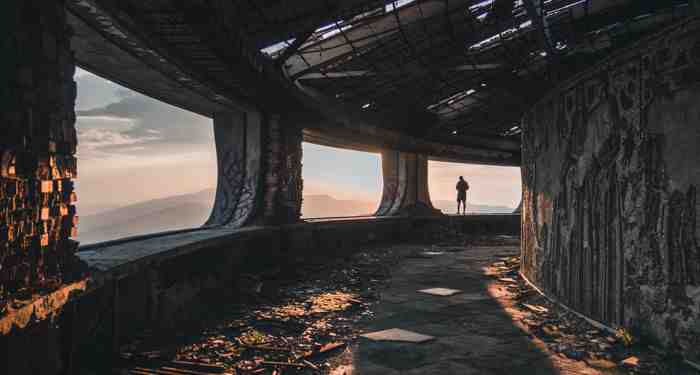
Before we get started, let me define “best” for you real fast. In this context, best does not secretly mean my favorite science fiction that I’m calling best because I’m the one writing the article. The best science fiction books of all time — at least the ones on this list — are the ones that remain highly rated, are incredibly popular, or have made some sort of mark on the science fiction genre or its various sub-genres, even mainstream culture as a whole. There are also only 20 books on this list, meaning it is not conclusive, as I am one person. I will inevitably miss a book that you think belongs on this list. So many science fiction falls into the definition of “best” that I’m using.
Because that’s what science fiction is meant to do: push the envelope, show what things could be if we continue down the path we’re on, and make you question what’s possible. So many science fiction books go beyond their own genre and cause ripples in adjoining genres like horror, etc. I mean, look at the influences from one of the most science fiction franchises on TV: Star Trek. It set the stage for so many other science fiction franchises, including Star Wars, by pushing boundaries of what was considered acceptable, and went further to inspire others in other arenas, like Nichelle Nichols inspiring other Black women (like Whoopi Goldberg) to become actors and making it easier for women and minorities to join NASA. Mainly by threatening them. Seriously. That’s what science fiction is meant to do, and is therefore often political (even in the “good old days”) and I’ve collected the best 20 science fiction books that I think fit the bill.
Neuromancer by William Gibson (1984) It may not have been the first cyberpunk book, which is considered to be The Shockwave Rider by John Brunner, but Neuromancer is definitely considered to have put the genre on the map and give it definition. It has a similar premise as Johnny Mnemonic (which was based off a short story also written by William Gibson), with a dash of The Matrix added in. The story follows a data thief on a last ditch run after his nervous system was crippled by some vindictive former employees. In addition to winning Gibson Hugo, Nebula, and Philip K. Dick awards, this book also laid down the foundations for tropes that would continue through the genre. If you want some more info on the cyberpunk genre in general, I recommend my primer of the cyberpunk genre.
A Wrinkle in Time by Madeleine L’Engle (1962) This is one of those science fiction books that treads the line between science and fantasy, though there is no denying that it’s scientific in basis with its discussions of quantum mechanics, time travel, and dimension hopping. As Molly Reiniger and others have pointed out, A Wrinkle in Time is many children’s — especially girls — introduction to science fiction. It was written with middle schoolers in mind, encouraging them to ask “but what if…” and has gone on to inspire numerous women to join the STEM field. I know it may not have been my first science fiction book (my parents are and have always been avid readers of the genre), but it’s the most memorable for me. In part because Meg sounded like me as a kid: uncool, frizzy hair, glasses, and often surly. It’s been made into two movies, adapted into a graphic novel, and into a play. There’s no denying the impact this book has had.
Unusual Suspects Newsletter Sign up to Unusual Suspects to receive news and recommendations for mystery/thriller readers. Thank you for signing up! Keep an eye on your inbox. By signing up you agree to our terms of use
Solaris by Stanisław Lem (1961) This is definitely a heavier read, not one that you sit and devour in an afternoon. Published in 1961, it follows the story of a team of researchers stationed on an alien planet covered in a seemingly endless ocean. On the surface it seems like your standard planetary research story, but the way Lem approached the concept was new for the time. He was more philosophical in basis, with the only sentient life on the planet being the ocean and the danger coming from the researchers’ psyches. Lem was never as big a name in the United States as other authors were as he was stuck behind the Iron Curtain, but that does not change his influence and reach. At one point he was called “the most widely read science fiction writer in the world,” and was well-known for jumping between sub-genres with ease.
Frankenstein, Or The Modern Prometheus by Mary Shelley (1818) When it comes to cultural touchstones in the science fiction genre, it is required to talk about this book. Even though it’s often called the first science fiction book, that’s technically not really true. In fact, she’s not even the first female science fiction writer, that would go to Mary Cavendish of The Blazing World. Still, Shelley laid down the foundation of science fiction as we know it, asking what happens when Man plays God nearly 200 years before Jurassic Park. She created the source material used by so many adaptations and spoofs you could write an article on them.
Parable of the Sower by Octavia E. Butler (1993) The first book of her Earthseed series, the story is set in 2025 when American society is collapsing due to climate change, corporate greed, and wealth disparity (sound familiar?). There are a few gated communities that serve as safe spaces where you are more protected from the poverty, cannibals, and wild dogs. But these communities collapse, and that is what sends Lauren out into the wilds, where she creates a religion along the way and pushes for people to look to the stars for a new home. It was a New York Times Notable Book of the Year, nominated for the Nebula for Best Novel, and most recently was a New York Times Best Seller in 2020. It’s also been adapted into a graphic novel AND an opera.
Hyperion by Dan Simmons (1989) This book is often called Canterbury Tales in space, and that’s honestly pretty accurate. Hyperion is one of Simmons’s most acclaimed books, and it follows his tendency to cram as many genres into one book as he can. In this collection of interconnected novellas in one overarching novel, you bounce between horror, hard-boiled crime, historical fiction, and thrillers when reading about a group of humans on a pilgrimage through the stars. A pilgrimage they were chosen to take for reasons unknown. It’s an interesting approach to science fiction, one you don’t see often, and is well-deserving of its acclaim.
The Three Body Problem by Cixin Liu (2008) Cixin Liu is one of China’s top-rated science fiction writers, and this book makes it clear why. The first book written by a Chinese author to win a Hugo, it’s set in an alternate history timeline starting with the Maoist Cultural Revolution in the 1960s. A secretive military project (as always, it’s a trope for a reason) have been sending signals into space, only for them to be picked up by an alien civilization on the brink of destruction. An alien civilization that thinks Earth sounds like a fantastic place to invade and turn into a new home. As expected, humanity fractures into two groups: those who, for one, welcome their new alien overlords and wish to help them take over the world they view as corrupt, and those who wish to fight against the invasion. It’s hard sci-fi, full of ideas that could be a novel all on their own, and is written in a way that causes you to force yourself to set the book aside periodically to absorb it all because you will want to devour this book in one sitting.
The Martian by Andy Weir (2011) We all saw the attention the movie adaption of this book got, and the subsequent nominations and awards it received. So believe me when I say that as good as the movie is, the book is even better. Weir puts in the research and the work to really put the science in science fiction. As a scientist myself, I can guarantee that the way the main character, Mark, is written is pretty accurate. We may have degrees in science, but we can also be so dumb sometimes in the most ridiculous ways. Especially if we are left alone long enough, like if we happened to be stranded on Mars, with only our research to keep us company and/or alive. Don’t worry, though, if you’re concerned about all the scientific jargon bogging you down and making this a difficult read. It’s written in such a way, and with enough comedic interludes, that while you may have to give your brain a break now and then, you’ll still be able to get through without a headache.
Ringworld by Larry Niven (1970) Ringworlds are iconic within the science fiction genre. They’re everywhere, especially when people want to have some shocking visuals. They pop up in video games like Halo, which is then given credit for the ringworld that pops up in Book of Boba Fett. But all ringworlds have their roots here, with Larry Niven. Once you get past his tendency to fall into the same writer’s trap that a lot of his contemporary male writers fall into — that women exist to only be one dimensional and to help further the men’s story — it’s still a good book to read. And it has won a Hugo and Nebula. In 1970. Keep that year in mind when reading it. Have better books been released since? Definitely, but that doesn’t change the influence this book has had on science fiction.
The Hitchhiker’s Guide to the Galaxy by Douglas Adams (1979-1992) Of course this series is included here. I would not be exaggerating to call this series one of the most influential science fiction books ever. Like, even if you haven’t seen the movie, or TV show, or the numerous stage adaptations, or listened to the radio play, or played the video game, or even just read the books or graphic novels, you likely still know something about this series just through cultural osmosis. You can reference “Don’t Panic,” “42,” or “so long and thanks for all the fish” in another work and people immediately know what you’re talking about. Not to mention, no one writes like Douglas Adams. The man is a masterclass in how to write metaphors and dry humor. The entire bit with dolphins is iconic by itself and it’s essentially set dressing to the rest of the story. You can’t talk best science fiction and not mention Douglas Adams.
Do Androids Dream of Electric Sheep by Philip K. Dick (1968) A precursor to cyberpunk as a genre (the term wasn’t coined until 1980), this book was loosely the inspiration for the Bladerunner movies and expands upon the question of what makes us human, and when technology advances enough is it even worth it to make that distinction? Assassin for hire Rick Deckard is how the book explores those questions as he hunts down androids who have fled servitude for a life of freedom on Earth. It’s another big cultural touchstone in the world of science fiction that has a nice blue collar element to the story.
Fullmetal Alchemist by Hiromu Arakawa (2002-2010) How is alchemy science fiction? Well, I would make the argument that alchemy was a proto-chemistry, the beginnings of the scientific method as we use it today, far more that just the search to turn lead into gold that we have reduced the practice to. Besides, this manga series has mechanical prostheses and could probably be considered steampunk as well. I think that earns it a spot on the science fiction shelves. You would also be hard-pressed to find an anime/manga fan that hasn’t come into contact with this series. It’s massively popular, with not one but two anime adaptations and an entire debate around which adaptation is better (it’s Brotherhood don’t @ me). There’s even what is practically a rite of passage for newbies engaging with it for the first time. Honestly, you could probably put it on the same list as series like One Piece or Naruto. It’s a fixture.
Binti by Nnedi Okorafor (2015-2018) If you want to talk about Africanfuturism, you have to talk about Nnedi Okorafor’s Binti novella trilogy. It pulls heavily from African cultures, namely the Himba peoples from Namibia, as it follows a young woman named Binti eschewing her tribe’s traditions to attend university in space. And that’s when she comes face to face with the Meduse, a nightmare alien race set on getting revenge on Binti’s university. The first book in the series won both a Nebula and a Hugo, but the next two novellas in the series are just as good. The novellas steadily get longer as the trilogy progresses: the first book 96 pages, the second 172, and the final one 208 pages.
The Time Machine by H.G. Wells (1895) While it is not the first instance of a time machine being used, this book is likely one of the most popular, and probably popularized the concept of using a machine to travel back and forth through time. H.G. Wells is one of the classic science fiction writers, in the same category as Jules Verne, George Orwell, and Aldous Huxley when it comes to establishing tropes within the genre. He even coined the term “time machine.” And The Time Machine is full of those tropes, dealing with human evolution, the effects of industrialization, and post-apocalyptic worlds. If you’ve ever heard of the name Morlock, like perhaps from Star Trek or The Simpsons, that species/name originated from this book.
Akira by Katsuhiro Otomo (1982-1990) How many times have you seen the Akira motorcycle slide ever since the movie came out in 1988, 1990 for the U.S.? If you’re not sure what I’m talking about, here’s a YouTube video collecting every homage in the last 30 years. It’s everywhere, even in children’s media. If a character is on a motorcycle, they’re going to do the slide. And before it was a movie, it was a manga. A manga that jump-started the Japanese version of cyberpunk. North America had William Gibson, and Japan had Katsuhiro Otomo. Without Akira, the American market for anime and manga likely wouldn’t exist the way it does now. Sure, there were a few trickles of cultural imports from Japan, but Akira opened the floodgates. Without it, other hits like Ghost in the Shell and Neon Genesis Evangelion likely wouldn’t have happened. Its impact is near immeasurable.
Ghost in the Shell by Masamune Shirow (1989-1997) This is another manga with a huge impact. It’s so influential that the Wachowskis said that they actually checked in with Shirow before making The Matrix because so much of it is essentially a straight copy. Video games like Metal Gear Solid, Cyberpunk 2077, and Deus Ex cite it as influences as well. For a lot of Western audiences, after Akira, it is synonymous with Japanese cyberpunk. It poses some serious questions about transhumanism too — how much of you is you if the only original part of your body is your brain, but your brain can be hacked? Especially when you exist to be at the beck and call of your government? Ghost in the Shell is not the first to ask these questions, but you have to admit: it does give them some pretty cool packaging.
Dark Matter: A Century of Speculative Fiction from the African Diaspora edited by Sheree Renée Thomas (2000) Until pretty recently, Black science fiction writers got overlooked in favor of white authors, especially in the early to mid 20th century. This anthology collects the last 100 years of science fiction written by Black authors, from names you may recognize, like W.E.B Du Bois and Octavia E. Butler, to names you may have not seen that much, like Kalamu ya Salaam and Tananarive Due. Not only does this book collect stories dating back to 1887, it also includes essays in the back from science fiction names like Octavia E. Butler and Samuel R. Delaney that look at the intersection of race and science fiction, pointing out how a lot of the classics we love could have really done better.
The Broken Earth Trilogy by N. K. Jemisin (2015-2017) N. K. Jemisin is another big name in current science fiction. Not only is she the first Black woman to win a Hugo, she is also the first author to win a Hugo for Best Novel three times in a row. All because of this series. Yes, you read that right, every book in this trilogy has won a Hugo for Best Novel. And deservedly so. The worldbuilding is beautiful, but like most books creating a new world to enjoy, the build up can be slow. So be patient, trust Jemisin, the pay off will be so worth it in the end.
Iron Widow by Xiran Jay Zhao (2021) C’mon. Pacific Rim style mechas with a story inspired by Chinese history, as well as being bisexual and having a poly romance? That set up alone belongs on a Best List. It avoids the played out love triangle trope, the constant “who will they choose” when the answer should be “why not both?” This book says why not both. And that’s just a subplot. Most of the book is full of mecha fights over the Great Wall, and the main character is based off Wu Zetian. As in Wu Zetian, the only female emperor China has ever had. I will put a warning on this one though: it does get violent and in your face at times. It’s also set in a deeply misogynistic society.
If you’re looking for more science fiction books, or information on its various genres, you can check out our other list of the most influential science fiction books of all time, this list of genre-bending science fiction, or maybe give some love to the best science fiction books you’ve never heard of.

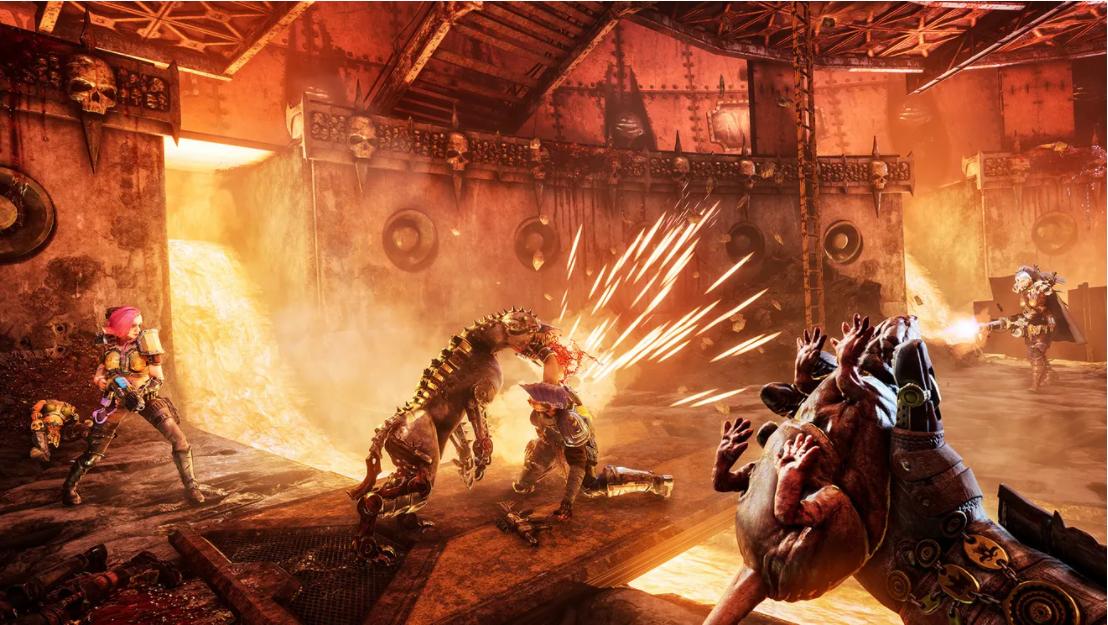
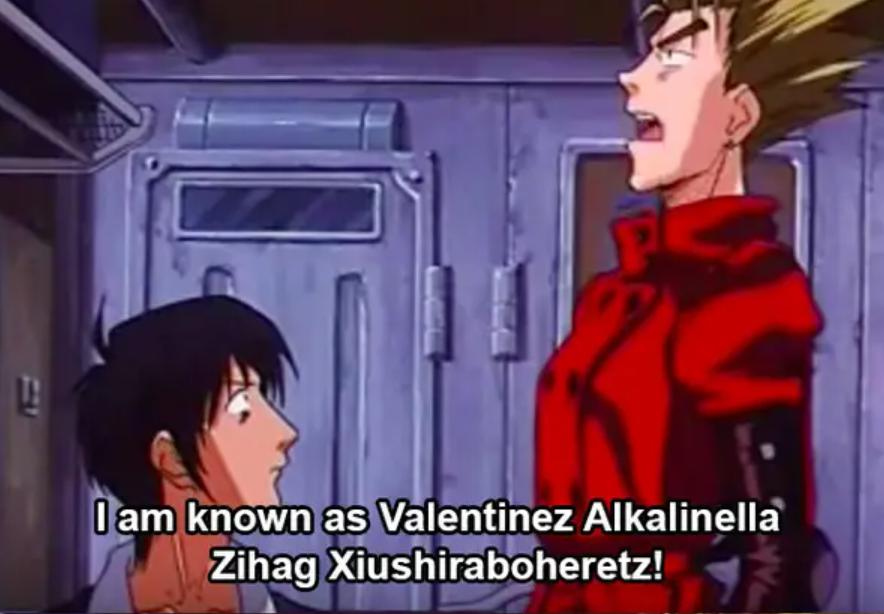
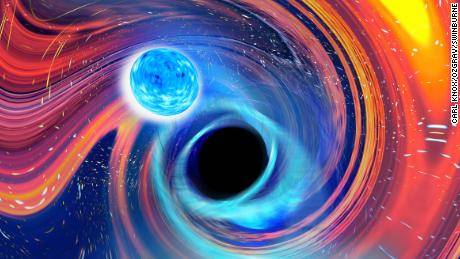


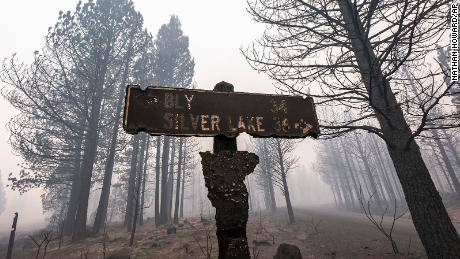


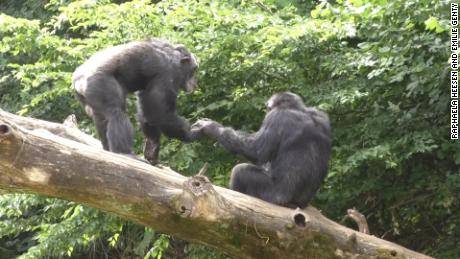

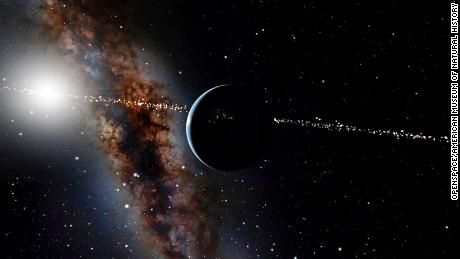
Write a Comment